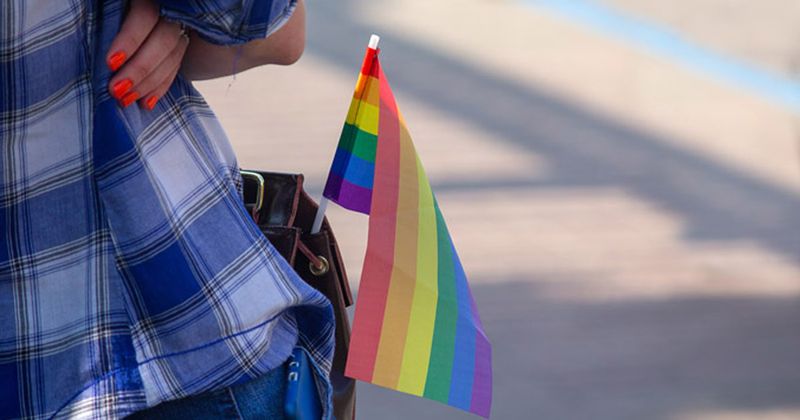Suicidality, self-harm ideation among LGBTQ+ youth vary based on daily stressors
Key takeaways:
- LGBTQ+ youth reported more intense suicidal and self-harm thoughts on days they experienced more stressors related to their identity.
- They also reported more emotional distress and dysregulation on these days.
On days when youth in the LGBTQ+ community reported more external and internal identity-related stressors, they also reported more intense thoughts of suicide and non-suicidal self-injury, data showed.
“All of us experience stress, like when we’re running late and stuck in traffic, or when we need to deliver a big presentation,” Ethan H. Mereish, PhD, MA, an associate professor and director of the Lavender Lab in the department of psychology at the University of Maryland in College Park, said in a press release. “But on top of those general stressors, LGBTQ+ people experience unique and chronic stressors related to their identities as a result of heterosexism and cissexism, that then put them at greater risk for poor health outcomes.”

From 2018 to 2019, Mereish and colleagues recruited 92 youth aged 12 to 19 years who self-identified as a sexual and/or gender minority. Participants recorded their daily experiences, suicidal and self-harm ideation and emotions in a 28-day daily diary survey. Surveys assessed external and internal stressors — including discrimination, microaggressions, internalized stigma and identity concealment — negative and positive affect, emotion dysregulation, suicidal ideation and behaviors and non-suicidal self-harm ideation and behaviors.
Overall, 91 (99%) of participants identified as a sexual minority and 33 (36%) identified as a gender minority. The largest proportions of sexual minority youth identified as bisexual (36%). Cisgender female (35%) and cisgender male (23%) were the most common gender identities, followed by transgender male (17%), genderqueer (16%) and transgender female (2%). Seven percent identified as another gender identity.
Analyses of diary entries revealed that experiencing external and internal minority stressors on a particular day was associated with a greater intensity of suicidal ideation and non-suicidal self-injury ideation on that day. Participants also reported greater negative affect, lower positive affect and more emotion dysregulation on these days.
Notably, negative affect and emotion dysregulation — not positive affect — accounted for most of the association between minority stressors and suicidal and non-suicidal self-injury ideation, the researchers wrote.
“We really need interventions at every level because minority stressors haven’t really decreased, and I project they will increase in states where some of these new anti-LGBTQ+ bills are becoming laws,” Mereish said in the release. “At the school and county levels, having affirmative, intersectional, and anti-bullying policies and staff and teacher trainings that incorporate, protect and affirm LGBTQ+ teens; at the therapist level, affirming teens and teaching them how to manage their emotions in a way that allows them to be resilient and healthy; at the community level, providing affirming spaces and activities for LGBTQ+ teens to connect and thrive; and at the policy level, stopping these bills from becoming law, and doing advocacy work to counter those that do can actually have an impact on reducing suicide rates. We have a lot of work to do.”
References:
- Mereish EH, et al. J Psychopathol Clin Sci. 2023;doi:10.1037/abn0000813.
- UMD psychologist finds daily occurrences’ impact on suicide, self-harm ideation in LGBTQ+ teens. https://www.eurekalert.org/news-releases/986524. Published April 18, 2023. Accessed April 24, 2023.

